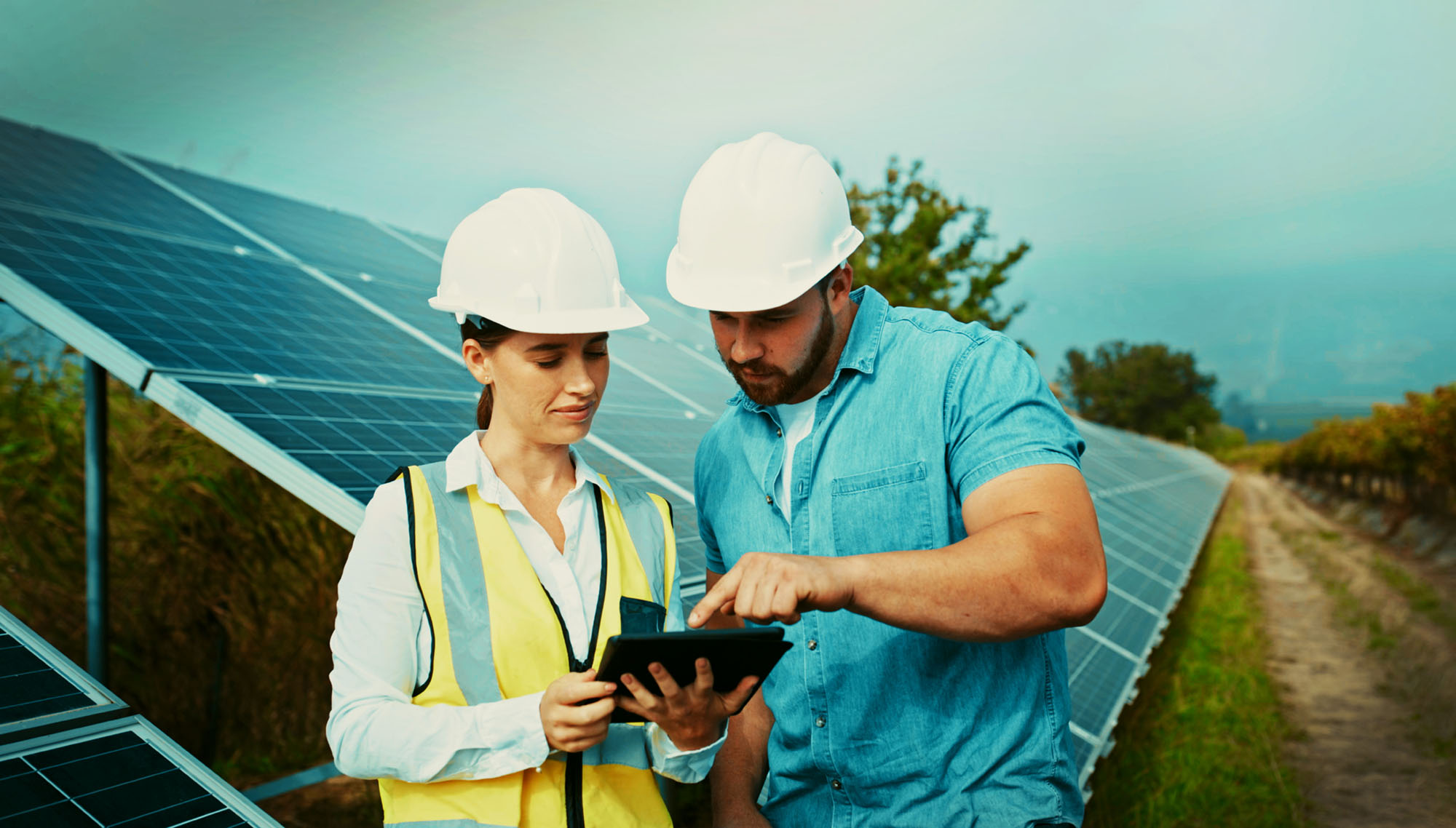What to Expect During Solar Farm Construction

Solar farm construction involves several stages, each designed to ensure that the project is completed efficiently and with minimal environmental impact. Here's an overview of the key steps:
1. Before Active Work on the Site: Site Assessment and Design
Site Selection and Assessment:
Engineers and developers assess potential sites for solar farms based on factors like sunlight exposure, land availability, proximity to the power grid, and environmental considerations.
Environmental and Regulatory Approvals:
Before construction can begin, developers must secure necessary permits, perform environmental impact studies, and ensure compliance with local regulations. This often includes evaluating the impact on wildlife, vegetation, and water resources.
2. Land Preparation
Clearing and Grading:
The land is cleared of any debris, vegetation, or obstacles that could interfere with construction. PureSky Energy minimizes environmental disturbance by using minimal grading techniques, if any at all.
Soil Stabilization:
In some cases, the ground is leveled or stabilized to provide a flat, sturdy foundation for solar panels. We take measures may also be taken to prevent erosion.
3. Foundation and Racking System Installation
Driving Piles:
Steel or concrete piles are driven into the ground to support the racking system that holds the solar panels. The piles are usually driven using an augur or another specialized machine, roughly the same size as a large tracker and often smaller than a harvester. This step ensures the solar panels can withstand weather conditions.
Racking Installation:
The racking system is assembled on top of the foundations, which consists of square, steel frames, designed to withstand strong wind and snow loading. This structure holds the solar panels at the optimal angle to capture sunlight.
4. Solar Panel and Inverter Installation
Panel Mounting:
Solar panels are mounted onto the racking system. These panels will convert sunlight into direct current (DC) electricity.
Inverter Setup:
Inverters are installed to convert the DC electricity generated by the panels into alternating current (AC), which is usable by the grid or local electrical systems.
5. Electrical Infrastructure
Cabling:
Electrical cables are laid out to connect the solar panels to inverters and eventually to the power grid. This includes both DC cabling (connecting the panels to the inverter) and AC cabling (connecting the inverter to the grid).
Substations and Transformers:
A substation may be constructed to handle the large amounts of electricity generated and to step up the voltage to the appropriate level for transmission.
6. Grid Connection
The solar farm is connected to the local electrical grid, which requires coordination with local utility companies to ensure the infrastructure can handle the new supply of electricity.
7. Testing and Commissioning
After all components are in place, the system undergoes rigorous testing to ensure everything operates safely and efficiently. This includes verifying power output, safety systems, and grid compatibility.
8. Landscaping and Environmental Mitigation
Final touches may include landscaping to restore vegetation, manage stormwater runoff, and mitigate the impact on local wildlife. PureSky Energy actively seeks out ways we can support local agriculture and habitats through pollinator-friendly plants or grazing land for livestock.
9. Ongoing Maintenance and Monitoring
Once operational, solar farms require regular maintenance and monitoring to ensure optimal performance. This includes cleaning the panels, inspecting electrical components, and checking for any damage caused by weather or animals. Whenever possible, PureSky prefers to hire people and companies from the local community to help with maintenance of the solar farm and land.
Overall, solar farm construction can take several months, depending on the size and complexity of the project.





